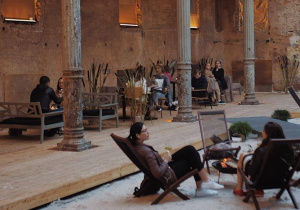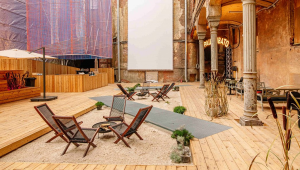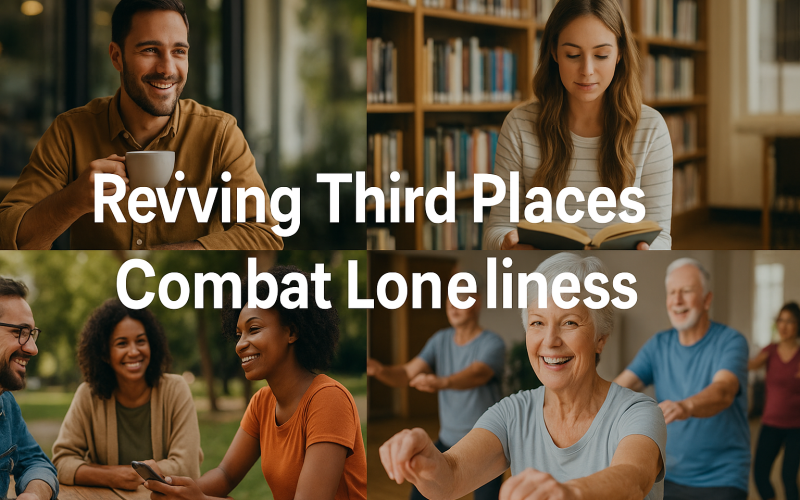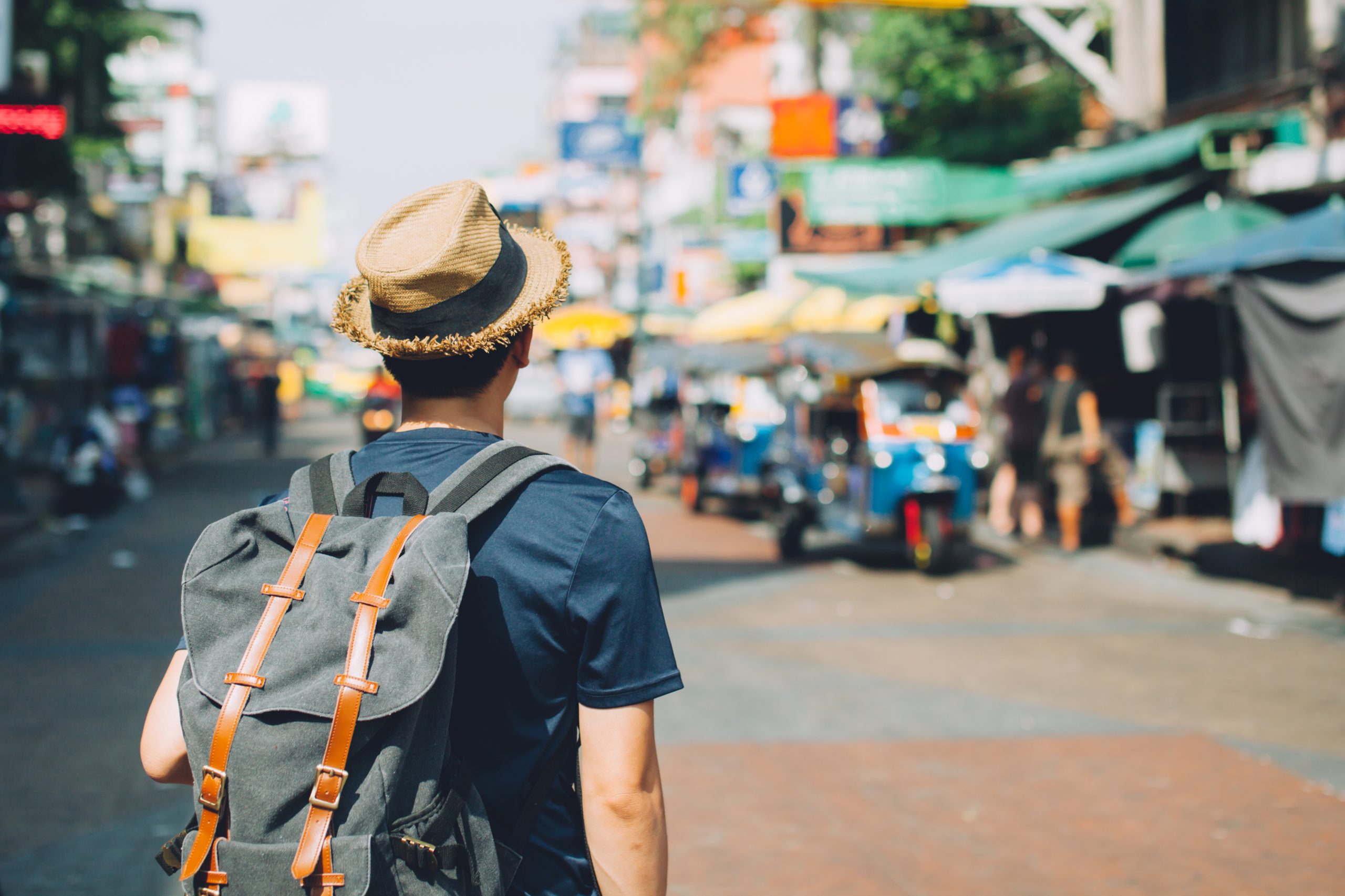Introduction
Walk down any busy city street and you may see hundreds of faces, yet many people feel more alone than ever. Remote work, long commutes, and endless screen time cut down casual chats that once brightened daily life. Loneliness is not just a sad mood; doctors link it to heart disease, anxiety, and shorter lifespans. One simple, time-tested fix stands out: third places—public spots that are neither home nor office but open to all. From cozy cafés to bustling parks, these shared zones invite spontaneous talk and a sense of belonging. This article explains what third places are, why they matter, and how we can revive them to build stronger, happier neighborhoods.
What Is a Third Place

Third places sit between first places (homes) and second places (work or school). Sociologist Ray Oldenburg coined the term to describe venues where people mingle without strict roles or high costs. Think corner coffee shops, barbershops, town squares, or recreation centers. The magic lies in their mix of regulars and newcomers—anyone can join, chat, play chess, or simply watch life unfold. These spaces are casual, welcoming, and nearby, so even short visits can spark friendly ties. In the past, many towns had dozens of such spots. Today, rising rents and online habits have pushed them aside, yet their value remains.
Key Traits of a True Third Place
A real third place is easy to reach, free or low-cost, and open at varied hours. It offers comfortable seating, no pressure to spend much, and a culture that says, “Stay as long as you like.” Entertainment often comes from the people themselves—conversation, board games, or shared hobbies—rather than expensive shows. Most importantly, no single group owns the scene; students, retirees, and newcomers all feel welcome. These traits nurture chance meetings that form the bedrock of social trust.
Why Loneliness Is Growing

Modern life pulls people apart in subtle ways. Many jobs moved online, cutting office banter. Gig work leaves workers rushing between tasks without a shared break room. Housing costs push friends to distant suburbs where car travel replaces sidewalk hellos. Social apps promise connection yet often deliver comparison and isolation. As a result, surveys in many countries show record numbers of adults who feel lonely “often.” This trend harms more than mental health. It weakens community safety, civic engagement, and even economic growth because cooperation declines when neighbors stay strangers.
How Third Places Counter Isolation
Third places work like social vitamins. They boost face-to-face talk, which releases “feel-good” hormones and builds trust. People who visit community spaces regularly are more likely to know local names, volunteer, and feel safe walking at night. In a café where the barista greets you by first name, stress drops and mood lifts.
Common Third Places and Their Strengths
| Type of Third Place | Typical Activities | Why It Fights Loneliness |
|---|---|---|
| Local Café | Chat over coffee, read, remote work | Casual setting sparks talk among varied ages |
| Public Library | Study, attend readings, browse media | Free entry, quiet zones, classes for all ages |
| Community Garden | Plant, share produce, host picnics | Shared tasks create teamwork and pride |
| Dog Park | Pet play, owner chats, events | Pets act as icebreakers, daily visits build routine |
| Makerspace | Craft, code, build gadgets | Skill sharing links hobbyists and mentors |
| Town Square | Markets, music, festivals | Central stage for culture and civic action |
Table shows how different venues serve social needs in unique ways while lowering barriers to entry.
Reimagining Traditional Venues
Many beloved spots still exist but need updates to meet modern schedules. Libraries add coffee kiosks and flexible furniture, turning quiet aisles into vibrant lounges. Churches open halls on weekday evenings for board-game nights, drawing secular neighbors. Barbershops host book clubs after closing time.
Breathing Life Into Cafés
Independent cafés face tough competition from chains. Yet small touches like community bulletin boards, open-mic nights, or “pay-it-forward” coffee tokens foster loyalty. Owners can create long tables for shared seating so solo guests feel less shy. Partnering with book clubs or language exchanges fills slow hours while enriching culture.
Libraries as Social Labs
Modern libraries lend tools, seeds, and even musical instruments. Workshops on resume writing or digital safety draw diverse patrons. Adding child-friendly corners lets parents linger longer, sparking cross-generation chats. Extended evening hours help shift workers drop by on the way home.
Designing New Third Places for a Digital Age

Future third places may combine physical comfort with digital tools. Imagine a park bench with solar ports where teens charge phones while grandparents knit nearby. Pop-up plazas can sprout in parking lots using movable planters and fold-out stages. In colder climates, heated bus shelters double as micro-lounges with book swaps.
Role of Local Government and Business
City halls can ease zoning rules to allow mixed-use storefronts and late hours. Grants for acoustic panels cut noise in multi-use halls, making them suitable for concerts and study alike. Business districts gain foot traffic when third places thrive; thus, chambers of commerce can sponsor street furniture, Wi-Fi hotspots, or weekly markets.
Challenges and How to Overcome

Funding
Small venues struggle with rising costs. Community-supported memberships, crowd-funded repairs, and volunteer shifts can bridge gaps. Municipal micro-grants for social infrastructure yield high health returns.
Safety Concerns
Good lighting, visible staff, and cooperation with local police build trust. Clear code-of-conduct signs define respectful behavior without stifling free expression.
Conclusion
Third places are the living rooms of society—open, informal, and welcoming to all. Reviving them tackles loneliness head-on by creating daily chances for laughter, help, and shared memories. From libraries and cafés to gardens and squares, these spaces transform strangers into neighbors, weaving a strong social fabric that supports mental and civic health. By updating old venues, designing flexible new ones, and pitching in as patrons, we can spark a ripple of connection that brightens every street.
Call to Action
Pick one local third place—be it a café, park, or library—and spend an hour there this week. Say hello to someone new, leave a book for others, or suggest a small event. Share your experience with friends and invite them along next time. Together, we can rebuild spaces that keep loneliness at bay and community spirit alive.











